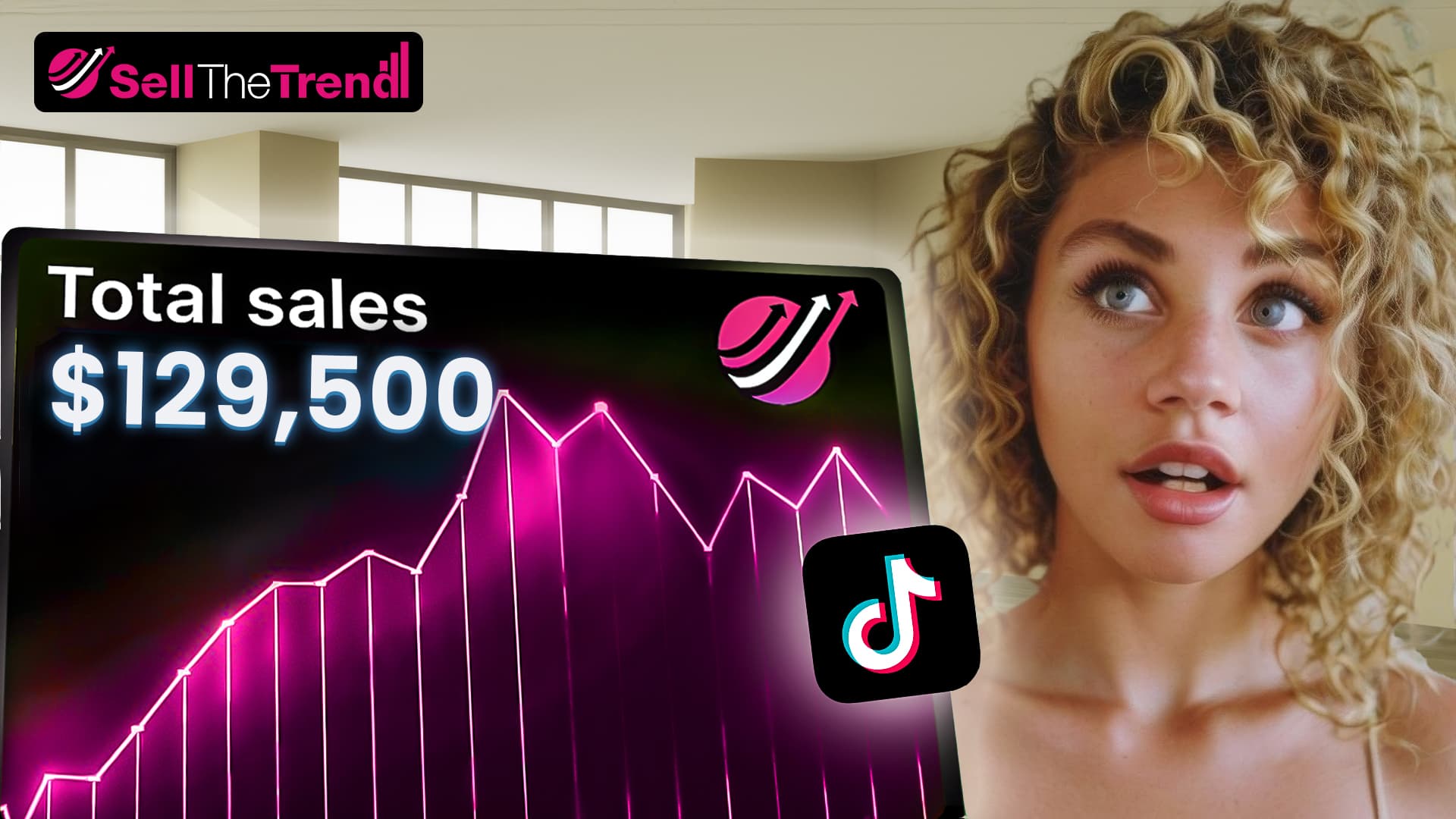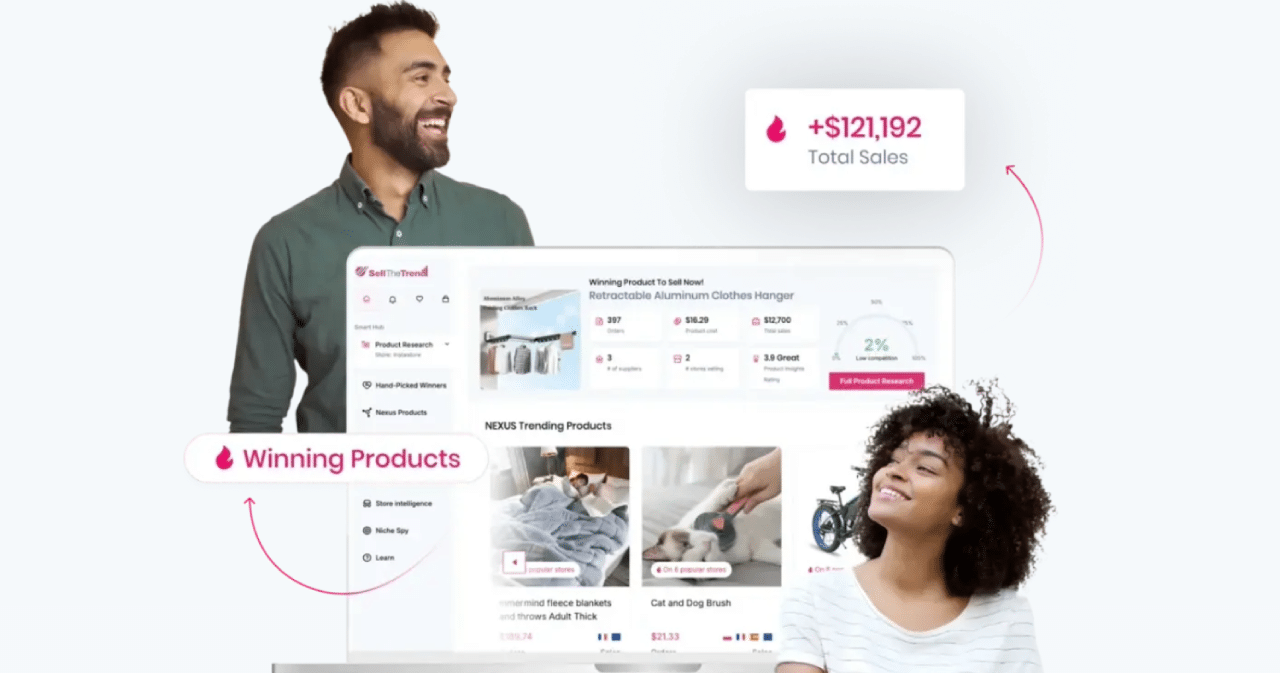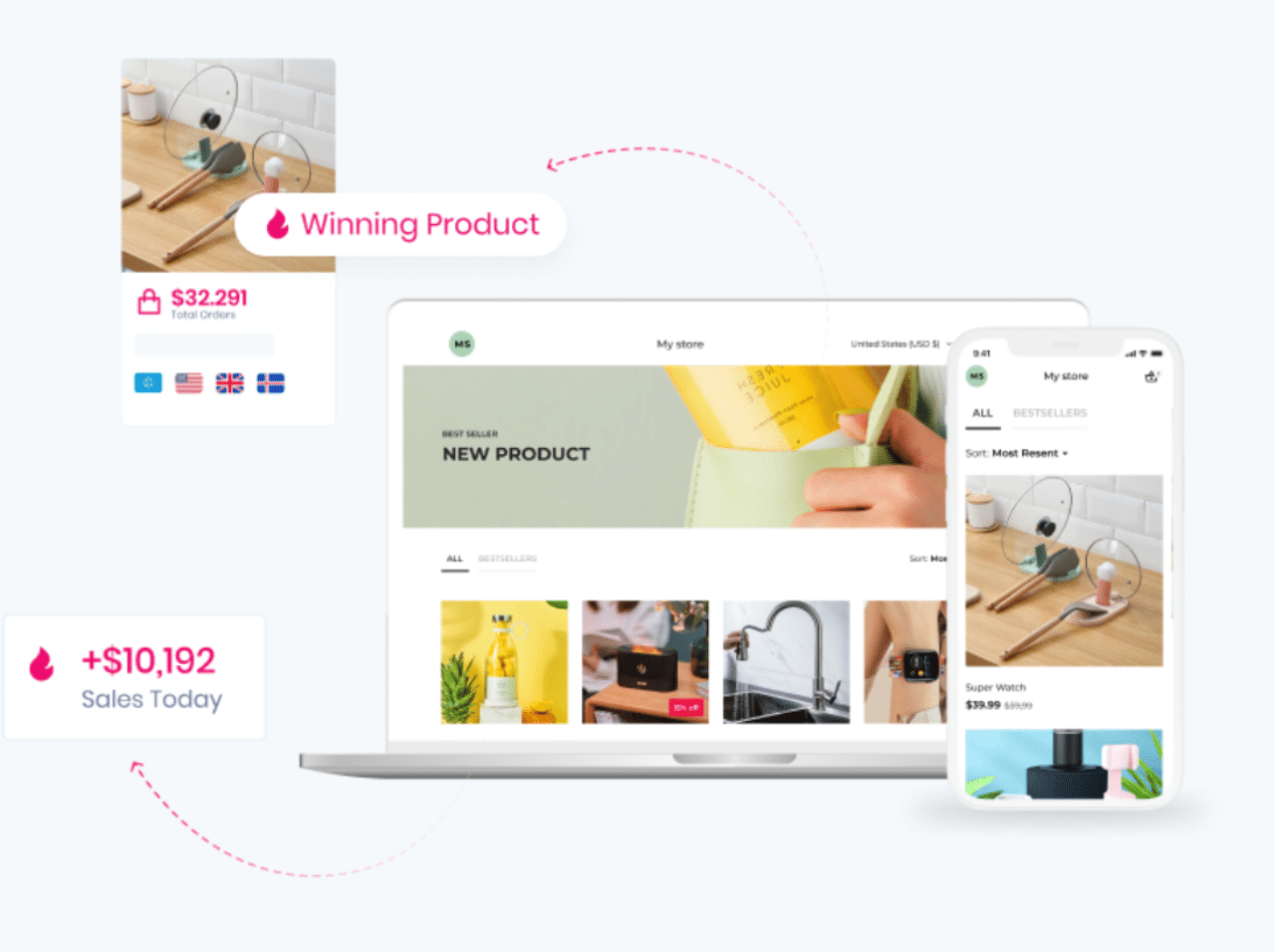How to Vet and Reach Out To Influencers For Your Dropshipping Business
Contents

Tired of Influencer Guesswork? Here’s How to Do It Right
Let’s cut the fluff.
If you’ve ever DM’d 15 influencers and crossed your fingers hoping for one to say “yes,” or spent hours browsing hashtags with zero strategy, then this is the guide that’s going to flip your entire approach to dropshipping influencer marketing.
We’re diving into a real strategy that works. From finding trending, high-converting products to connecting with influencers who don’t drain your wallet, this is your influencer marketing blueprint. No guesswork. No random outreach. Just smart tactics and powerful tools.
Let’s roll.
Step One: Start With a Winning Product
Before you even think about influencers, let’s talk product. Influencer marketing without a high-converting product is like putting premium gas in a rust bucket. You need something that’s not just trending, but also built to sell.
That’s where Sell The Trend comes in.
Use Nexus AI to Spot Trending Winners
The Nexus AI tool is like having your product researcher who never sleeps. It scans millions of ecommerce data points to help you:
- Discover products trending right now
- Forecast future top performers
- Analyze real sales data, profit margins, and audience targeting
No more relying on your “gut feeling.” This tool shows you what’s working in real time.
Start your 14-day free trial and test-drive this feature.
Want a Shortcut? Use Handpicked Products
Not ready to get elbow-deep in data? No problem. Sell The Trend also offers a curated list of handpicked products, chosen by actual ecommerce experts, not bots.
Every product in this section has been vetted for:
- High visual appeal (perfect for influencer content)
- Strong perceived value
- Current market momentum
In our example, we went with a beauty product called the “Cool Blast”—a sleek, branded-looking item that feels high-end and solves a real customer problem. Products like this make influencer content pop, which means better engagement and better conversion.
Check out trending beauty products now.
Step Two: Push to Store in One Click
Now that you’ve found your winner, it’s go time.
Instead of juggling product descriptions, importing photos, and manually syncing inventory, just use 1-Click Push-To-Store.
Yup, one click.
Sell The Trend auto-generates:
- SEO product descriptions
- Facebook and TikTok ad copy
- Downloadable video creatives
- Pricing breakdowns and profit margins
- Pre-loaded supplier info
Have a Shopify store? You can connect it in seconds.
No Shopify yet? No sweat. You can launch a beautiful, ready-to-sell store in minutes using SellShop. Choose a niche, and the site builds itself, complete with built-in winning products, fast-shipping suppliers, and conversion-optimized design.
Step Three: Find the Right Influencer (The Smart Way)
Here’s the golden rule: Don’t chase follower counts. Chase engagement.
You’re not looking for Kendall Jenner. You’re looking for micro-influencers—those with 5,000 to 100,000 followers. These are creators who:
- Charge far less
- Have higher engagement rates
- Speak directly to tight-knit, trust-based audiences
Use Instagram Hashtags Strategically
Instead of browsing endlessly, use targeted hashtags. Start with your product niche. Selling a beauty tool? Try:
- #beautygirl
- #makeupartistworldwide
- #haircaretips
- #NYCbeauty
- #fashionblogger
Open profiles. Then vet them for:
- Follower count (stick to 5k–100k)
- Location (match your target market, e.g., US-based influencer for US customers)
- Engagement (read comments—not just likes)
- Bio cues (email included = easier contact)
Example: If you’re selling into the Polish beauty market, an influencer like @anna_beauty_pl with 11K followers and strong comment activity is gold.
Want US-based influencers? Search “#NYCbeauty” or “#USAbeauty” and filter until you find a creator with a great following and solid, authentic interaction. Avoid profiles with inflated followers and weak engagement—that’s a red flag.
Step Four: Expand the Search to YouTube & TikTok
Instagram is just the start.
On YouTube:
- Use search terms like “makeup,” “beauty haul,” or “skincare routine.”
- Filter by “Channels”
- Avoid creators with under 20 videos or long breaks in posting
- Check the “About” tab for email and location
On TikTok:
- Use the same hashtags (#NYCbeauty, #haircaretips, etc.)
- Look for creators with 10K–100K followers and over 100K total likes
- Watch how their audience interacts in the comments
Likes on TikTok are easier to rack up, but comments and shares are where the trust lives. Use that as your engagement litmus test.
Need product inspiration that’s already crushing it on TikTok?
Check out Sell The Trend’s TikTok Ads Explorer. It shows you real product ad examples that are trending, complete with data, so you know you’re picking a product with viral potential.
Step Five: Still Want Faster Results? Use a Paid Tool
If you’re ready to scale or short on time, consider paid influencer discovery platforms like:
- Heepsy: Filter by niche, country, engagement, and platform. See exact follower counts and contact info instantly.
- InfluencerDB: See detailed metrics on audience quality and reach, but it’s subscription-based.
Manual methods are free and reliable, but paid tools help you speed things up if you’re juggling multiple campaigns.
How to Vet Influencers Like a Pro
Let’s recap what we’re aiming for:
- 5K–100K followers
- Location matches your target audience
- Real engagement (likes, comments, shares—not fake)
- Consistent posting history
- Audience fit (aligned with your product niche)
But here’s where most dropshippers slip up—they don’t do a deep enough check.
Here’s a simple checklist you can follow:
- Are most comments genuine or spammy?
Real influencers have legit conversations in their comments section. - Are their followers aligned with your target demographic?
If your product is skincare for women 25–35, but most followers are teenagers, skip. - Are they promoting similar products?
You don’t want your brand to feel like an odd fit on their feed. - Are their previous collaborations successful?
If they’ve worked with brands before, that’s a great sign they know how to drive results.
If you want even more certainty, use Sell The Trend’s built-in Influencer Engagement Calculator. It helps you analyze whether an influencer’s audience is truly engaged, or if you’re about to waste your budget.
This single tool can save you hundreds (if not thousands) on influencer deals that look good on the surface but won’t convert.
How to Reach Out to Influencers (The Right Way)
Now you’ve got a shortlist of micro-influencers who match your product niche. It’s time to connect.
Rule #1: Personalize your message.
Rule #2: Keep it short and friendly.
Rule #3: Focus on what’s in it for them.
Example DM Template (Instagram):
Hey [Influencer Name],
I’m [Your Name], the founder of [Brand Name]. I love your content, especially your posts on [specific post or theme you noticed].
We’re launching a new [Product Type] that aligns perfectly with your style and your audience.
I’d love to send you one for free and discuss a potential collaboration.
Would you be open to chatting more about it?
Looking forward to hearing from you!
Example Email Template:
Subject: Collaboration Opportunity with [Brand Name]
Hi [Influencer First Name],
I’m [Your Name], founder of [Brand Name]. I’ve been following your content and love how authentic and engaging your posts are—especially your recent focus on [mention something specific you noticed].
We’re launching a new [Product Type] that I believe your audience would genuinely love. I’d love to send you a free sample and discuss a potential collaboration opportunity.
If you’re interested, I’d be happy to share more details.
Thanks so much for your time,
[Your Name]
[Your Brand Contact Info]
Follow Up Like a Pro
Not everyone will respond the first time—that’s normal.
Wait 3–5 days, then send a short follow-up:
Hey [Influencer Name],
Just following up on my previous message. I’d love to connect if you’re open to collaborations!
Hope to hear from you soon.
Tip: Don’t spam. If they still don’t respond after one follow-up, move on to the next influencer.
How to Manage Your Influencer Collabs
Once an influencer agrees, here’s a simple process to keep things smooth:
- Send a clear agreement
- Will they post a video? A story? Both?
- How many posts?
- When will the content go live?
- Will you be allowed to repurpose the content for ads?
- Track performance
- Monitor the content once it’s live.
- Use UTM codes or unique discount codes to track conversions.
- See how much traffic and sales they generate.
- Scale what works
- If one influencer delivers great ROI, reinvest and go bigger.
- If one underperforms, analyze why before trying again.
Build Long-Term Influencer Relationships
The biggest dropshipping brands don’t just run one-off influencer campaigns—they build ongoing relationships.
Benefits of long-term influencer partnerships:
- You lock in better rates.
- Their audience starts to associate your product with trust.
- You can schedule regular content drops.
- You get better repurposable content for your ads.
Don’t think of this as a one-and-done play. Treat it like a growth channel.
What About Scaling? Use Paid Influencer Tools
Once you’re ready to manage dozens of influencer campaigns, manual outreach can slow you down. That’s where tools like:
- Heepsy
- InfluencerDB
… come into play.
But remember: Sell The Trend’s Influencer Engagement Calculator already gives you a powerful edge, without needing extra subscriptions.
If you’re scaling fast, then adding paid tools to your stack makes sense. But for beginners or intermediate store owners, you can dominate with the manual method + Sell The Trend’s built-in tools.
Product + Influencer = Marketing Magic
Let’s tie it together:
- You start by finding a proven, high-converting product with Nexus AI or Handpicked Products.
- You use 1-Click Push-To-Store to add the product to your Shopify store or SellShop store instantly.
- You research and vet high-engagement micro-influencers on Instagram, YouTube, and TikTok.
- You reach out with personalized messages and follow-ups.
- You manage your influencer relationships professionally.
- You track results and scale what works.
This is how modern dropshippers are winning with influencer marketing in 2025—and it’s never been easier to execute thanks to tools like Sell The Trend.








